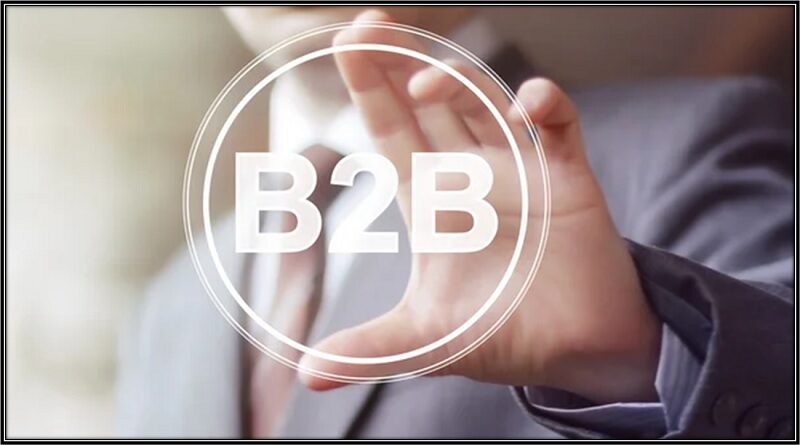B2B PR: What you need to know about taking your business to the next level
Every company has a distinct brand identity, target market, and set of goods or services. However, each one of them aspires to be seen by their intended audience as a top authority in their field. For maximum market influence and to stand out among competitors, brands seek to blend traditional and digital B2B PR (Public Relations) techniques. The saying goes further than the deed. Companies must invest a lot of effort and money into gaining as much publicity as they can, but the results are not always favorable. Therefore, if you are prepared to grow your company, we are happy to give you some advice on how to properly do B2B PR.
What is B2B PR?
Business-to-business public relations (B2B PR) are used to advertise a company and boost its sales to other businesses. All forms of media—paid, earned, shared, and owned—can be used to do this. By concentrating on public relations, B2B firms can utilize PR methods to actively manage and cultivate their reputation among clients, staff, suppliers, and other parties. By obtaining high-quality media coverage, PR for B2B businesses strives to position them as market leaders and foster and preserve enduring connections and positive reputations. To guarantee that all target audiences are reached, B2B methods can be utilized in conjunction with B2C initiatives. For example, computer technology businesses advertise to both business and consumer audiences, and both PR sides are responsible for creating a comprehensive strategy alongside social media channels and other digital marketing.
What are the fundamental B2B PR lessons you need to know?
To begin with, we must understand what B2B public relations are and how they can be used. What are some of the most fundamental industry lessons we must learn to succeed?
PR and advertising are quite different
PR and advertising have some of the same objectives, for example improving financial performance, but they are different in how they achieve them. Every activity in advertising costs money, and you may spend thousands of euros, dollars, or pounds on a campaign without achieving any sales. PR is based on building trust and establishing relationships through third-party endorsement. Seeing advertisements on a prominent trade publication or website, for example, is one thing. However, if you read an article or review about a product you’re thinking about for your company, or if you see a prominent executive speaking as a thought leader on a hot topic, buyers will be more inclined to purchase from that company. An earned PR placement can have more value than a paid ad, as it presents the company and spokesperson as a leader in their industry and one whose words can be trusted.
Staying on top of the ins and outs of the industry
It is always important to create a compelling marketing campaign but maintaining awareness of industry developments and being able to react quickly are also crucial parts of PR. Keeping up with the latest newsletters and blogs such as PR Daily, B2B Marketing, PR Report, Holmes Report, and PR Week are all just ways for great B2B PR teams to stay informed. In addition to interacting with social media influencers, they also stay informed of any negative sentiment through these sources. This way, they can react more quickly to anything that requires their attention and where necessary reactive PR campaigns.
Creating and sharing content is key
B2B PR requires the creation and distribution of content. Companies can showcase their expertise by publishing a corporate blog or a thought leadership article in industry publications, for example. It is always beneficial to have a constant flow of content, but the key is to boost your brand recognition. By using SEO tools and including key terms in your material that are detected via simple searches, you can ensure that your content is seen by the appropriate audience.
Use different outlets to expand your reach
Achieving the greatest quality audience possible is the goal of B2B PR. Every route that your customers follow must be identified. Your core customers must be understood in terms of their job category, field, location, issues, and incentives. You must identify the key trade publications, websites, analysts, and blogs that appeal to your audience as soon as you begin. Which trade shows do they visit? Are there any online forums or groups? Do they use any social media platforms? You must understand your target audience in depth to connect with them properly. By understanding who you want to reach and how they prefer to be contacted, you can increase your success.
It is important for B2B PR must be measured
The AMEC Measurement Framework can be used to prove a PR campaign’s effectiveness (and, subsequently, budget increases). This framework is a fantastic illustration of how to organise your PR strategy to get the greatest outcomes. You should be able to demonstrate how the PR team’s actions have increased advocacy or enhanced awareness. It doesn’t matter how many news releases you produced; what matters is how those releases helped the business. Focus more on outcomes than production. If employees are given the means to track and exhibit their activity, they will develop trust and generate resources for future work by having a clear understanding of how their work affects the organization’s goals.
It’s a marathon, not a sprint
It’s crucial to keep in mind when developing a business PR strategy and campaign that instant results are nice but building longstanding relationships should be the objective. Setting realistic goals and objectives and executing them will help you deliver clear messages, constant content production, and strategic outreach, resulting in long-term success. These steps will ensure your B2B PR success.
What can a specialist Business PR Agency help you achieve?
There are three main ways a PR company can help your business, and these include:
- Visibility – Having a strong content and editorial strategy will help your brand appear in the right media and be recognized as a leader, thanks to its high digital currency.
- Value – Your PR firm can help you gain user attention and build customer loyalty by delivering the most relevant content to the right people.
- Understanding – Your PR firm will help you develop a message that is appropriate and compelling enough to generate demand for your brand.
What should you expect from B2B PR companies?
- A clear plan – It’s critical to understand what your B2B PR agency is doing to help you reach your goals. A well-structured approach that takes you from where you currently are to where you want to be is critical to avoid wasting time and money.
- Proactive engagement – The success of your relationships will rely on your ability to adjust and respond quickly to opportunities and PR professionals will be experts in this.
- Create compelling ideas – Your PR firm should have a proven method for producing strategically aligned articles, campaigns, and thought leadership ideas. PR is dependent on creativity and contacts to ensure high-level press coverage.
- Perfect writing and communication skills – PR is all about enhancing your brand’s reputation by managing people’s perceptions through compelling content creation.
- Engaging and curious attitude – Mutual respect and enthusiasm for the personalities and tasks involved are required for your relationship to succeed.




